Most horses have three gaits – walk, trot and canter. But a few breeds have other ways of moving their four legs. Some horses pace, which is when legs move in lateral pairs. The Icelandic horse has a unique fourth gear – the tolt. It’s four-beat, like a walk, but fast, like speed-walking.
Bridle trails are everywhere in Iceland, but we weren’t there for the riding. It was October, when most livery yards are closed for the season.

I didn’t expect to be able to get on an Icelandic horse and experience the tolt. But we spent one night at a farm stay, knowing that at least I’d get to see an Icelandic horse farm and chat with the farmer, Magnus.
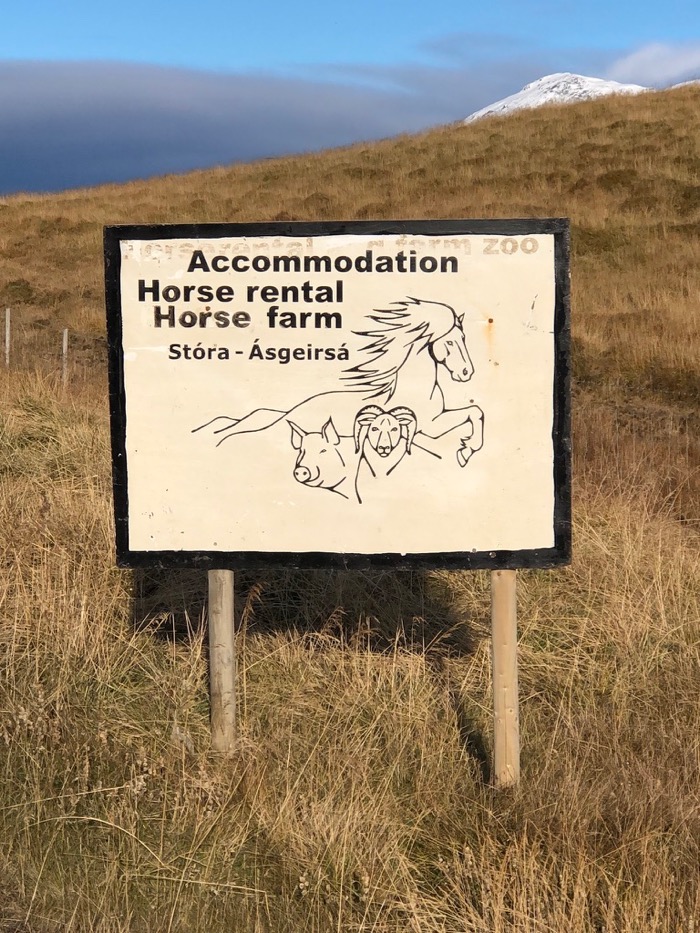
At this time of year, the weather in Iceland careens from dangerously windy, to pelting rain, to drizzle, to cold, to sunny. Unbelievably, the morning that we woke up on Magnus’ farm dawned clear and (comparatively) warm. Not only that, he’d yet to take the shoes off of all of his horses for the winter, and his seasonal assistant, Karin, had not yet returned to Germany. We decided that I could go out for a ride!

Magnus tacked up Stivi, who he said was one of his best tolters. Icelandic horses come in all colors, but, out of his herd of about 70, Magnus managed to find one marked like Tonka! Stivi even had a crazy mane, although his was twice as thick and long as Tonka’s. Stivi’s conformation is also different than Tonka’s. Note that short and wide neck and that short and sloping rump. How he’s built enables the tolt.
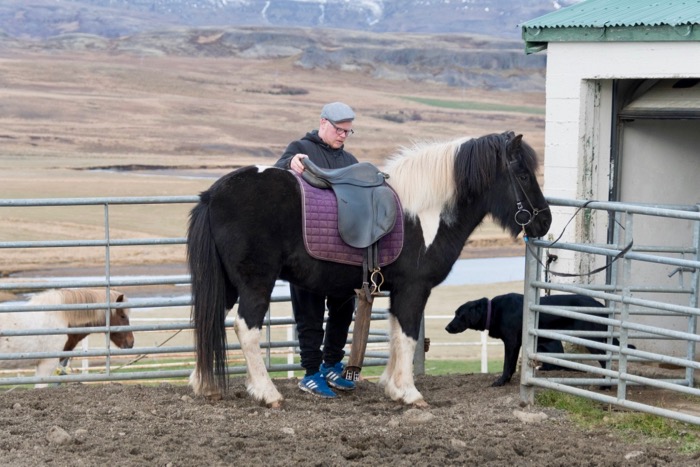
Before I got on, Karin gave me a quick lesson on how to ride an Icelandic horse. Rein contact is different than I’m used to. To ask for the tolt, you steady their head with the reins, pulling back, but softly. Icelandic horses go with their necks up and braced.
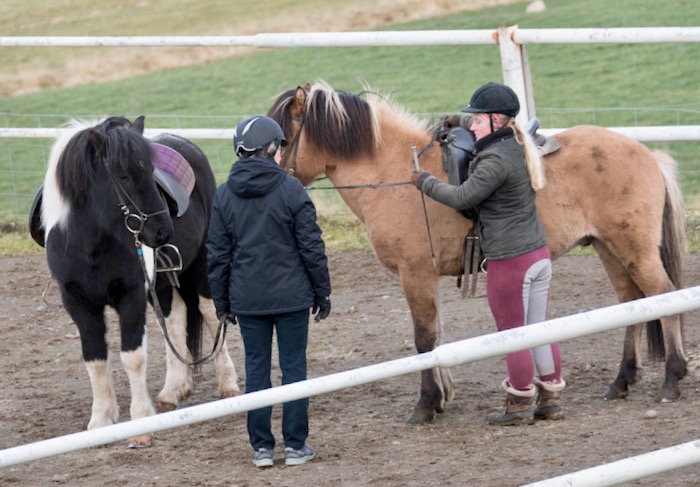
If I did that on Tonka, he’d stop. Riding Stivi required me to to communicate to the horse differently than I’ve been trained. Following Karin’s directions, Stivi would power forward into a smooth, gliding, and yet quick, tolt. If I let go of the contact, it was like riding an egg beater.
We went twice around the paddock near the barn to make sure that I could ride the tolt. The first time I felt it, I laughed out loud. It’s that much fun.
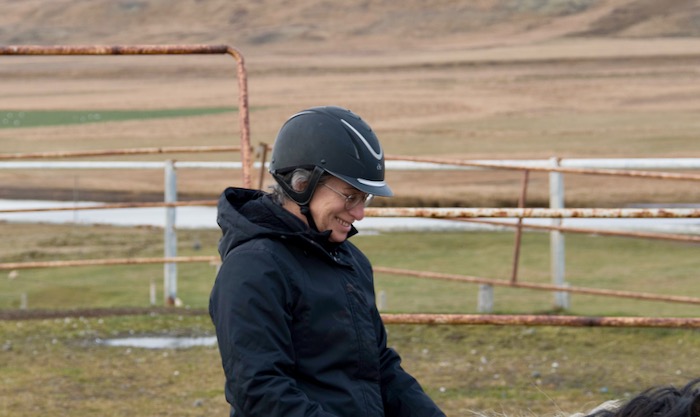
Then Karin and I headed out into the gorgeous Icelandic landscape.
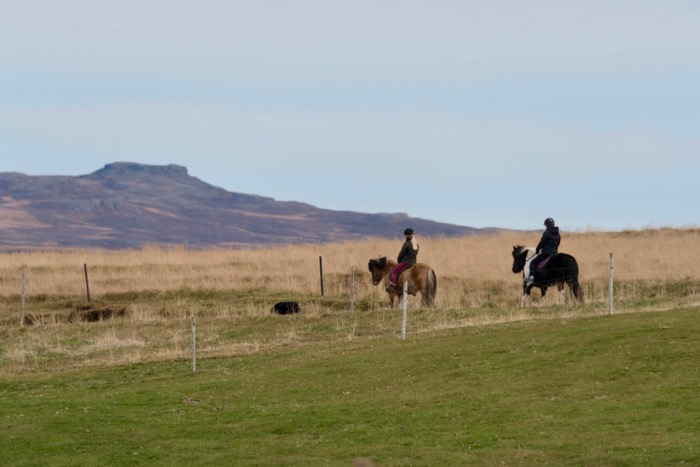
Soon, we were zipping through this countryside, all the way to the river, which we crossed, and then back.

Although I easily settled into the correct rein contact and seat for the tolt, it took me awhile to figure out how to hold my hands so that they didn’t get entangled in that wild mane!

Before we left the farm, Magnus watched me tolt and declared that I was a competent rider, and that Karin could take me to their oval training track to canter. That was not as easy to sit to as the tolt! I had a churning, bumpy, going all-out little horse under me. The first time around I lost a stirrup, but managed to stay on. Karin explained that I should ride the canter “like a jump.” So the second time circling the oval, I got into a two-point position, and grabbed onto that mane. Off we went! It was a hoot.
We continued on, walking over rough terrain, and tolting where the footing was level. Once you settle into the tolt, riding is effortless. I could see why Icelanders value these horses for covering long distances over often treacherous ground.
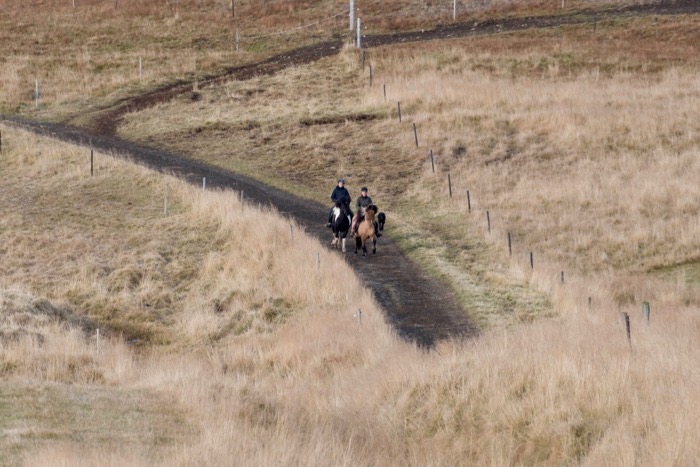
Not all horses tolt as effortlessly as Stivi. Karin was riding Magnus’ show horse, and his gaits are flashier. He’s a little powerhouse. Fun to watch, but I was happy to be on calm, willing, and smooth-as-silk Stivi.
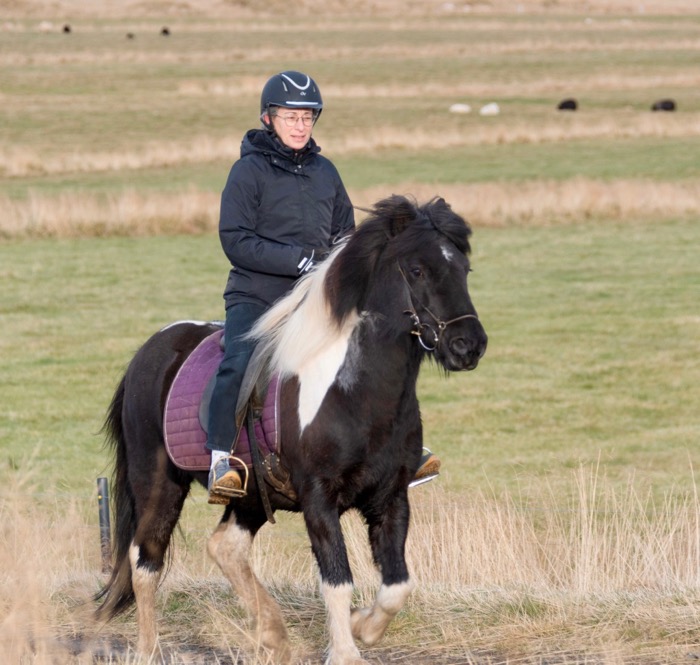


Haha! You almost had us fooled into thinking you only LOOKED AT the Icelandic horses!!! We should know you by now, Terry!
PS we won’t spill the beans to Tonka 😉
He had a nice vacation too, and didn’t mind at all 🙂
it seems your stars were aligned for that wonderful experience ! So glad you got to riding !
Thanks! Yes, I truly lucked out.
It looks like you had a lot of fun. They are lovely looking horses.
Totally adorable horses.
What fun!! Felt like I was there with you! Thank you for sharing the experience!
You’re welcome!
Very interesting reading about the holt which I had not heard off. Looks like you had a lot of fun, Jess is jealous. 🙂
Hi Terry, been watching the Girls for a while rather concerned about Jasper, she seems to be struggling to walk and when she does its a strange walk. Hope she is okay ??
Like all of the hens, Jasper is old, has ailments, and is doing the best she can. This is an especially difficult season for chickens as they transition from laying to the molt.
Wow, what an amazing experience!!
After that intriguing description, I had to see the tolt in action!
Here are some short videos:
https://www.google.com/search?q=tolt&source=lnms&tbm=vid&sa=X&ved=0ahUKEwi__PTa1o7eAhWn5oMKHZ1uDHoQ_AUIDigB&biw=1405&bih=904
Oh my goodness! What an experience and what hardy little beasts the Icelandics are! No blanketing needed there. I have heard about the tolt, and I believe there is a farm in Vermont that raises these horses. I have a Tennessee Walker who of course has a running walk, and I didn’t think he even had a trot. It was super cool when we first figured out how to get him to switch gaits! It usually involves trotting poles. Finally I was able to continue dressage training with another gait, one that has more swing and more collection!